AMAZON multi-meters discounts AMAZON oscilloscope discounts
When you open a modern electronic product, the apparent complexity may seem overwhelming. Even pocket-sized gadgets can sport a surprising complement of goodies inside. MP3 players and GPS units, for instance, are miniature computers, with RAM, ROM and a microprocessor. Some even have hard drives.
Older products, including those with double-sided circuit boards, usually had components only on one side. Not anymore! Thanks to the complexity and size of today's gadgetry, parts are mounted on both sides. Components that stick up, like transformers and can-style electrolytic capacitors, are often relegated to one side so the board can fit flush against the case. Everything else is fair game. Transistors, chips, resistors and small inductors and capacitors may be anywhere. As you wend your way through a circuit's path, you can expect to flip the board over numerous times.
To find your way around in a box crammed full of parts, wires and boards, you need to become acquainted with what the major sections of the product look like, how components tend to be laid out, and how to follow connections from recognizable features back to those less obvious.
Though the features vary a great deal depending on the product's function, pretty much every device has a power supply section, an input section (or several), some kind of signal processing and one or more output sections. Let's look at some common circuit sections and how to locate them.
Power Supplies
Everything has a power supply of some kind. It could be a pair of AA cells, a simple linear supply or a complex switching supply with multiple voltage outputs. Power supply problems account for many repairs, so recognizing the power supply section is vital.
Batteries, obviously, are hard to miss. Battery-powered devices may have other power supply components as well, though, such as a switching converter to step up a single AA cell's 1.5 volts to a level high enough to run the product. Even when the battery voltage would be adequate on its own, a device may include conversion and regulation to ensure that a weak battery doesn't affect the reliability of writing to memory cards or hard drives, both of which can be seriously scrambled by insufficient voltage during write operations. Digital cameras and laptops have such systems so they can operate properly until the battery is nearly dead and then shut down the device gracefully.
To find voltage converters and regulation systems in battery-powered gear, look for small inductors and transformers. There are many varieties of them, but the telltale sign is metal. These things don't look anything like transistors and chips. They may be round or square, but most are made from ferrite material, which is a darkish metal with a matte surface. Toroid (doughnut-shaped) cores are common. You may be able to see the wire wrapped around the core, but don't count on it. See FIG. 1.
Along with these, keep an eye out for electrolytic capacitors. Although electrolytics can be sprinkled throughout any circuit, the larger ones tend to be congregated in or near power supply sections. Diodes and voltage regulators will be found there too. Most very small products don't use enough current to require heatsinks on regulators and switching transistors, but larger devices usually do.
It might seem natural that you could follow the wires from the battery compartment straight to the supply section, but it doesn't always work out that way.
Much of today's gear uses transistor switching driven by a microprocessor to turn itself on and off, rather than a real power switch actually interrupting the current between the batteries and the circuit. There may be some distance from where the batteries connect to the board and the location of the voltage conversion and regulation circuitry. Those little transformers are your best landmarks.

FIG. 1 Miniature inductors and transformers
In AC-powered products, finding the power supply is a lot easier. Follow the AC cord and it'll get you there! Hard switches are still used in some AC devices, but those with remote controls, like VCRs, DVRs, TVs and some projectors, use the same microprocessor-controlled soft switching found in battery-op gadgets, so you can't count on the on/off switch's being in line with the AC cord. Look for a transformer.
Switching supplies are pretty much standard now, but some products, especially high end audio amps and receivers, still use linear supplies for their essentially noiseless operation. The transformer in a linear supply is a lot larger than the one in a switcher.
See FIG. 2. In a switcher, look for a transformer like that shown in FIG. 3.
The power supply sections of pocket-sized devices are likely to be on the main circuit board, while those in AC-powered devices are almost always located on a separate board, with a cable feeding the output to the rest of the circuitry. See FIG. 4.
Once you've located the power supply, its major features are easy to spot. In a switcher, the AC line will go through a line filter that looks like a small transformer, then through a fuse, and on to the rectifiers, which may be separate diodes, a bridge rectifier or a double diode, depending on the design. After that comes the chopper transistor, which is probably heatsinked. Near it will be a large electrolytic capacitor with a voltage rating in the hundreds. Then comes the transformer, followed by the low-voltage rectification and regulation circuitry. At the very end, right by the output wires, you'll see the large electrolytic filter caps with significantly lower voltage ratings than on the one next to the chopper.
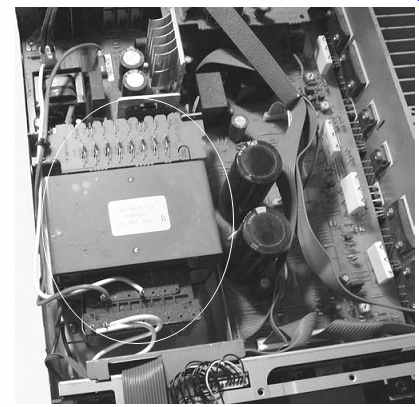
FIG. 2 Linear power supply transformer
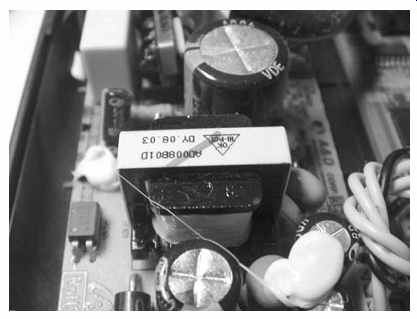
FIG. 3 Switching power supply transformer
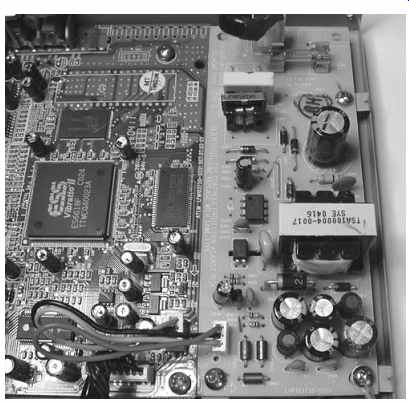
FIG. 4 Power supply board. The chopper is hidden by the transformer.

FIG. 5 LCD backlight inverter. Note the plastic insulation over the transformers.
In a linear supply, which has much less complexity, the AC line will go through the fuse and to the transformer. You won't see a heatsinked transistor or a big electrolytic cap on the AC line side of the transformer. On the low-voltage side, you'll find the rectifiers, regulators and filters.
A special type of power supply is the voltage inverter, a step-up supply driven from the main power supply's DC output. The inverter takes that low voltage and produces the high voltages required by LCD backlights. Inverters look like miniature switching supplies, which is basically what they are. The parts are much smaller, though, and you'll see two transformers and two output cables in bigger displays with two fluorescent lamps behind the screen. Most designs put the transformers at opposite ends of the board. See FIG. 5.
Input
The input sections collect signals and feed them to the signal processing areas. The type of input circuitry present depends on the nature of the incoming signals. In radio and TV gear, input comes from an antenna or cable in the form of radio-frequency (RF) signals with strengths ranging from millionths to thousandths of a volt. The function of the input section is to amplify those very weak signals so further stages can separate out the desired one and demodulate it. The most common approach involves inductors (coils) resonating at the desired frequency. Analog tuners use a mechanically variable capacitor in parallel with the coil to change the frequency.
Digital setups also use coils, but the tuning is controlled by the digital circuitry and accomplished with a varactor, which is a voltage-variable capacitor.
TVs may also accept baseband video, which is the analog video signal without an RF carrier. Various flavors of baseband video include composite, in which the entire signal is carried on one wire; S-video, in which the chroma (color) information is carried on separate wires from the luminance (brightness) signal; and component, which provides separate connections for red, green and blue. The input circuitry for each style of video is somewhat different.
The easiest way to find video input circuitry is to follow the lines coming from the input jacks. In sets with multiple input types, which is most of them these days, the lines will go to some sort of switching circuitry first so the set can choose the desired signal. After that, the signal will be sent to the appropriate stages for amplification and preparation for further processing.
Input can also be from a transducer, such as a laser optical head, phono cartridge, phototransistor, tape head or microphone. The signals from transducers may be very weak, as with magnetic phono cartridges, video heads and hard drive heads, or somewhat stronger, as with laser optical heads and phototransistors. Most of the time, the input circuitry will involve low-level amplification to prepare the signal for the signal processing sections. Because of their sensitivity to weak signals, input stages for transducers are often hidden under metal shields. Sometimes RF input stages are also shielded.
Signal Processing
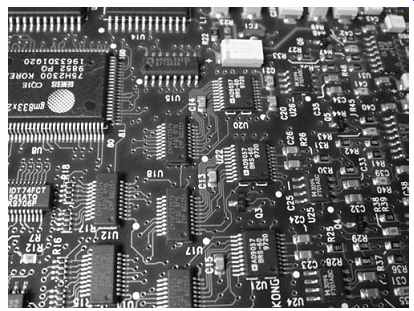
FIG. 6 Digital signal processing section

FIG. 7 Analog signal processing section
Most products process a signal of some sort, be it analog or digital. Some kind of information is taken in or retrieved and massaged into whatever it is you want to hear, see, record, play back, send or receive. Much of the circuitry in any device is dedicated to signal processing. This is the little stuff, with lots of resistors, capacitors, transistors and chips. Digital circuitry is mostly chips, with a few bypass capacitors, and other small components that set operating parameters. See FIG. 6.
Analog signal processing circuits also use chips, but those tend to be small-scale, with around a dozen leads, not a hundred. Analog sections also use more transistors than do digital ones, and you may see variable capacitors, potentiometers and adjustable signal transformers, especially in radio and TV receivers. See FIG. 7.
While many products are primarily digital, plenty of them combine analog and digital functions, with a digital control system operating the analog sections.
Frequency-synthesized radios use analog stages to pick up, amplify and detect radio signals, but their tuning is entirely digitally derived. Disc and MP3 players process everything in the digital domain and then convert the results to analog for output.
Digital control sections are recognizable by the large microprocessor chip with lots of leads. Look for a crystal or resonator very close to the micro. If the product has a display, it'll probably be near the heart of the control section, as will a keypad or a series of control buttons. See FIG. 8.
Even in all-digital devices, signal processing, output and power supply sections look quite different from the control circuits.
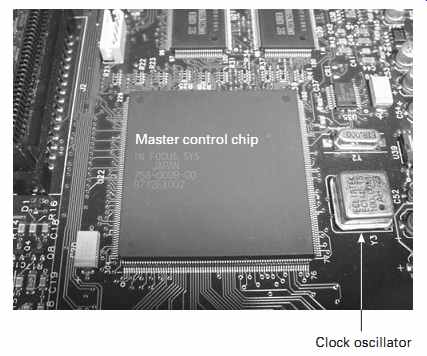
FIG. 8 Digital control section Clock oscillator
Output Stages
Output stages prepare the signal for display, a speaker, headphones, a transmitting antenna, a print head, a motor, and so on. In many cases, a large part of this preparation is current amplification, to give the signal the oomph to drive a speaker, move a motor or push an RF signal for miles. The primary identifying characteristic of output stages is that they are larger than most of what's around them. In some cases, like headphone amplifiers and small speaker drivers used in pocket radios and cell phones, the current required is low enough that the output stage may be quite small.
Usually, however, more current is needed, so the parts are larger and better equipped to dissipate the higher heat.
The style of output stage depends on what is being driven. Audio amplifiers driving large speakers with many watts will have sizable heatsinks for the output transistors or modules. If modules are used, they will be much larger than power transistors, with more leads. If discrete transistors are employed, they'll range in size from around a postage stamp to perhaps 1 1/2 inches long. See FIG. 9.
Output components used to drive motors may have heatsinks, but they might not if the motor is small and doesn't carry much load. Some motor drivers are just transistors on the circuit board. They're likely to be a little larger than the others, though.

FIG. 9 These output transistors in a stereo receiver are larger than
average, but they have only three leads, and their 2SC and 2SA part numbers
prove they're transistors, not modules.
The output circuitry for dot-matrix LCDs is integrated into the display itself, along the edges. This stuff isn't serviceable; if a row or column goes bad, the LCD must be replaced. Simple numeric LCDs don't carry their own driver circuits. Instead, they're driven directly by the micro or by an external driver chip.
Mechanisms
We're heading toward a time when electronic products no longer include mechanical elements. Tape recording is already a dead technology. Eventually, everything will record to and play from memory chips, and even hard drives and optical discs will fade into obscurity.
That time has not come yet, and some of today's products still have mechanisms.
Those in hard drives are sealed to prevent even the tiniest dust mote from crashing the heads into the platter, but the mechanics in optical disc players are readily accessible, and they cause enough trouble that you should get familiar with them.
Digital Light Processor (DLP) TVs and video projectors use color wheel assemblies rotating at high speed. And if you're servicing older technology like VCRs, tape-based camcorders, audio tape recorders and turntables, you're going to get well acquainted with mechanisms and their peculiarities.
Figures 10 to 13 show some mechanical sections you'll encounter. For more details on specific mechanisms, see Section 14.

FIG. 10 Video head drum in a MiniDV camcorder: Head tip, Pinch roller;
Capstan
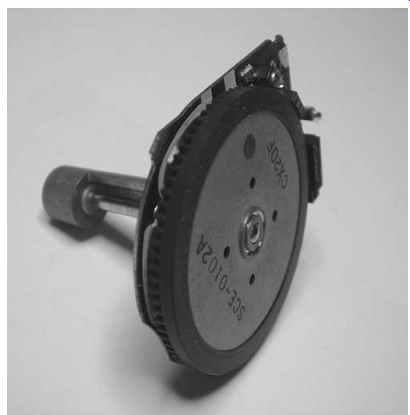
FIG. 11 Camcorder capstan motor
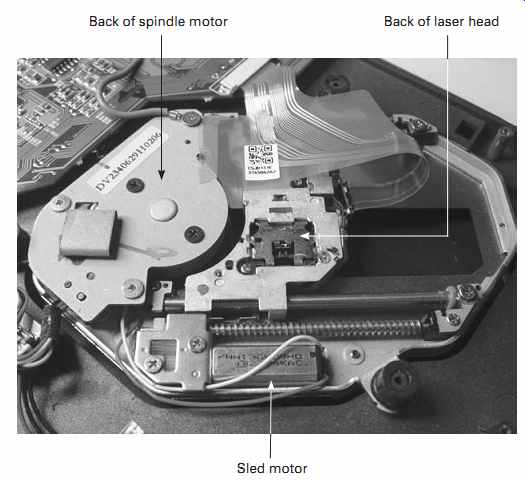
FIG. 12 Laser optical head sled assembly: Back of spindle motor, Back of
laser head, Sled motor

FIG. 13 Color wheel assembly in a DLP video projector
Danger Points
As we discussed in Section 3, there are dangerous spots in many electronic products.
While it seems obvious that AC-powered circuitry would be the most hazardous, don't discount battery-operated gadgets as being harmless. Some products step up the battery voltage to levels that can give you a nasty jolt. Digital cameras, especially, generate hundreds of volts for their flash tubes, and it gets stored in a big capacitor capable of biting you weeks after being charged.
Watch out for any exposed points connected to the AC line. Also, heatsinks are usually grounded, especially in audio amplifier output stages, but those in switching power supplies may not be. The heatsink on a switcher's chopper transistor can be at hundreds of volts. Never touch it if the AC cord is plugged in. Even when the supply is unplugged, the heatsink may have a full charge from the electrolytic capacitor.
Unplug the product and measure from the heatsink to the negative side of the big capacitor to see if any voltage is present. Remember, the AC side of a switcher is not connected to circuit ground, so measuring from the heatsink to circuit ground will show 0 volts, regardless of what's actually there! The cases of metal power transistors in output sections can carry significant voltage as well. Avoid touching those without first measuring from them to circuit ground. Even 50 volts can do you harm if it's applied across your hands, especially if they are wet or sweaty. If you've ever touched your tongue to the terminals of a 9-volt battery, you know how little it takes.
The output connections of backlight inverters can be at 1000 volts or more. Keep away from them when the device is powered on.
VCRs, DVD players and some other products use small fluorescent displays.
Lighting those up requires a few hundred volts, so beware of their connections.